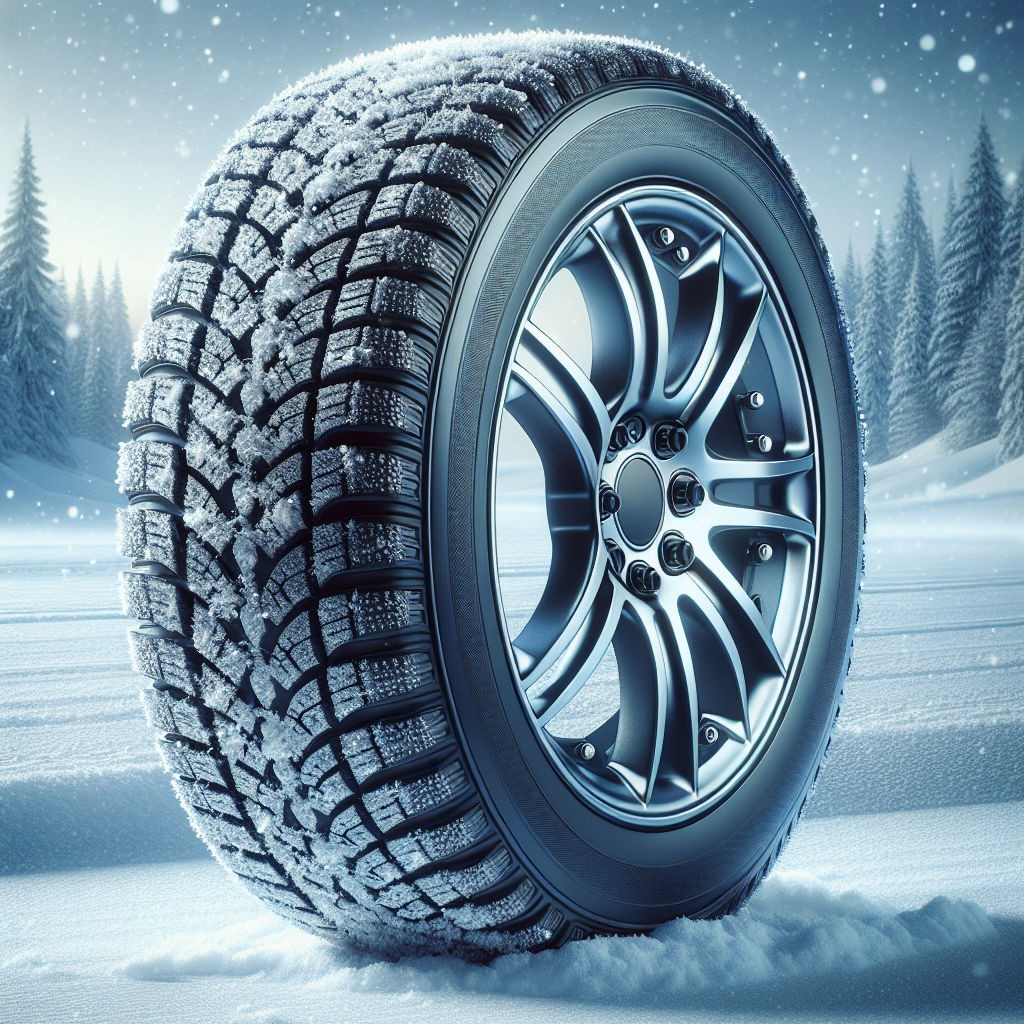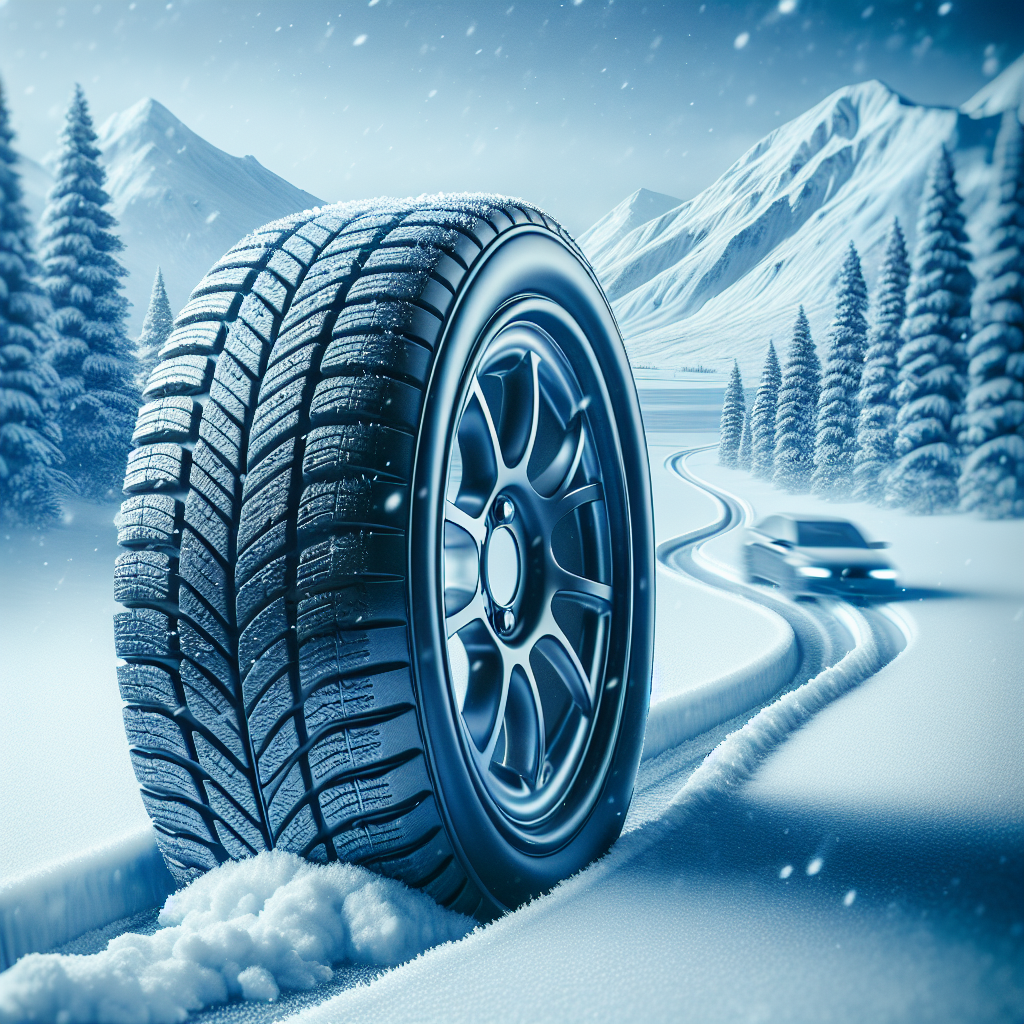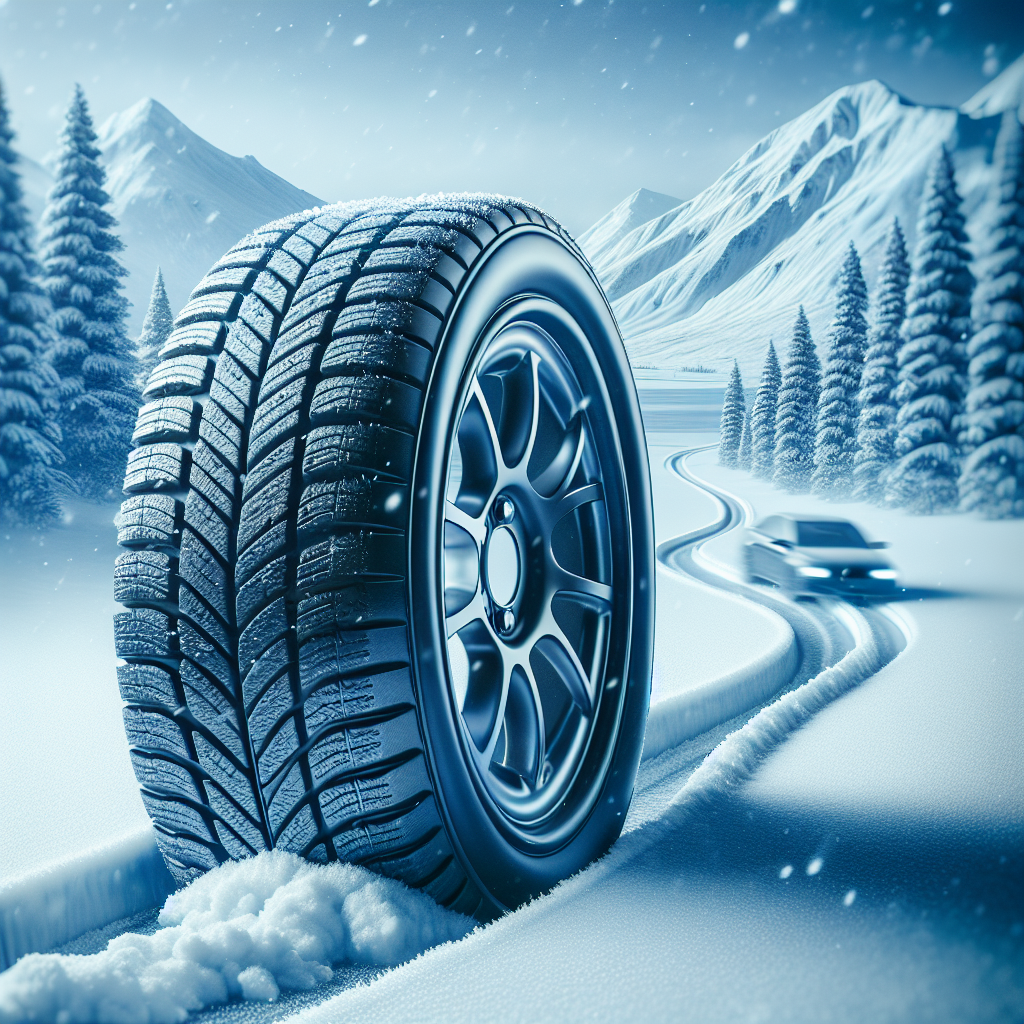Imagine driving on a snowy road, feeling the car start to skid as you desperately try to regain control. Now, picture a car equipped with winter tires effortlessly gliding through the same conditions, seemingly unaffected by the icy terrain. Winter tires are not just a luxury; they play a vital role in ensuring your safety on the road during the winter months. By providing enhanced traction, improved braking capabilities, and better control, winter tires are the unsung hero that keeps you secure during the coldest and most challenging times of the year.
Reduced Stopping Distance
Tread Design
One of the key features that make winter tires essential for road safety during the winter months is their special tread design. Winter tires are specifically engineered with deeper and more aggressive tread patterns compared to regular tires. These unique tread designs allow for better grip on snowy and icy surfaces by providing additional biting edges, which ultimately reduce the stopping distance of your vehicle. So, when you need to hit the brakes in a winter driving situation, winter tires greatly enhance your ability to stop safely and quickly.
Rubber Compound
Another crucial element that sets winter tires apart is the type of rubber compound used in their construction. Winter tires are made of a specialized rubber compound that remains pliable even in extremely cold temperatures. This flexibility ensures that the tires can maintain optimal contact with the road, thereby maximizing traction. When the temperature drops, regular tires tend to harden, which decreases their grip and makes driving more dangerous. Winter tires, on the other hand, are designed to stay soft and supple, providing you with the necessary grip to navigate slippery winter roads.
Sipes and Grooves
Winter tires also excel in their ability to channel water, slush, and snow away from the tire’s contact patch. This is made possible through the incorporation of sipes and grooves in their tread design. Sipes are small, thin slits on the tire surface that create additional biting edges for enhanced traction on icy surfaces. Grooves, on the other hand, help to channel water and slush away from the tire, reducing the risk of aquaplaning and improving overall traction. Together, these features ensure that your winter tires maintain contact with the road, keeping you safe and in control throughout the winter months.
Improved Traction
Unique Tread Patterns
Winter tires feature tread patterns that are specifically designed to excel in harsh winter conditions. The variation in groove patterns and block shapes allows for increased rubber-to-road contact, providing you with improved traction when driving on icy or snowy surfaces. These unique tread patterns help to enhance grip, allowing you to start and stop more effectively, even in challenging winter driving scenarios.
Deeper Tread Depth
Compared to regular tires, winter tires have deeper tread depths. This allows the tires to push away snow and slush more efficiently, preventing them from building up in the treads and affecting the tire’s grip on the road. The extra depth also provides additional space for the tread patterns to perform optimally, maximizing traction and ensuring a safer driving experience. With winter tires’ deeper tread depths, you can confidently navigate through snow-covered roads without compromising on safety.
Wider Channels
To further enhance traction on winter roads, winter tires are equipped with wider channels or grooves. These wider channels facilitate the evacuation of snow, slush, and water to prevent hydroplaning, providing you with increased stability and control. By effectively clearing the road surface from these elements, winter tires help to maintain a stronger grip, reducing the risk of accidents and enhancing overall traction in slippery conditions.

Enhanced Handling and Stability
Flexible Rubber
Winter tires’ special rubber compound not only improves grip but also enhances handling and stability. The flexibility of the rubber allows the tire to conform to the road surface, providing you with better control and responsiveness in cold weather. The increased handling and stability minimize the chances of skidding or losing control, ultimately making your winter driving experience safer and more enjoyable.
Specially Designed Shoulder Blocks
Winter tires are often equipped with specially designed shoulder blocks. These blocks provide additional support and stability when cornering or navigating curves. By firmly gripping the road, the specialized shoulder blocks improve handling and enhance overall stability, reducing the risk of sliding or fishtailing in winter driving conditions. With winter tires’ optimized shoulder blocks, you can confidently maneuver your vehicle through snowy or icy turns, ensuring a safer and more controlled driving experience.
Enhanced Steering Response
Winter tires’ design also contributes to improved steering response, adding another layer of safety to your winter driving. The unique tread patterns and flexible rubber combine to provide better traction and grip during steering maneuvers. This enhanced steering response allows you to maintain control and change directions smoothly, even on slippery surfaces. With winter tires’ improved steering response, you can navigate through winter roads with confidence, knowing that you have the necessary control over your vehicle.
Optimized Grip on Snow and Ice
Biting Edges
One of the primary reasons winter tires excel in winter driving conditions is their ability to create additional biting edges. Biting edges are the small, sharp angles on the tread surface that dig into the snow or ice, providing increased traction. Winter tires have more sipes, which are the small cuts or channels on the tread blocks, designed to create these biting edges. By generating more biting edges, winter tires dramatically enhance traction on snow and ice, ensuring that your vehicle stays firmly planted on the road.
Added Stiffness
Winter tires are constructed with specialized rubber compounds that offer added stiffness. This stiffness helps to improve the tire’s grip on icy surfaces. While regular tires can become too pliable and lose their grip on ice, winter tires’ increased stiffness allows them to maintain optimal contact with the road. With this optimized grip on snow and ice, winter tires provide you with the confidence to drive safely, even in the harshest winter conditions.
Specialized Nubs
Winter tires often feature specialized nubs or raised rubber sections strategically placed within the tread pattern. These nubs provide further gripping edges and play a significant role in improving traction on snow and ice. As the tire rotates, these nubs come into contact with the road surface, biting into the snow or ice and providing additional traction. With these specialized nubs, winter tires optimize grip and ensure stability, making winter driving safer and more controlled.

Reduced Aquaplaning Risk
Deeper Treads
One of the significant advantages of winter tires when it comes to wet conditions is their deeper treads. Winter tires are designed with deeper and wider treads that effectively channel water away from the tire’s contact patch. This design minimizes the risk of aquaplaning, a dangerous situation caused by the tire losing contact with the road due to excessive water on the surface. With their ability to disperse water more efficiently, winter tires greatly reduce the potential for aquaplaning, ensuring better handling and increased safety, even in heavy rain or slushy conditions.
Wide Circumferential Grooves
Winter tires feature wider circumferential grooves, which are the channels that run around the tire’s circumference. These grooves play a critical role in evacuating water, slush, and ice, reducing the risk of hydroplaning. By quickly steering water away from the tire’s contact patch, winter tires maintain better traction in wet conditions, minimizing the chances of losing control or skidding. The wider circumferential grooves on winter tires provide you with increased safety and peace of mind when driving through wet or slushy winter roads.
V-Shaped Patterns
In addition to deeper treads and wider circumferential grooves, some winter tires feature V-shaped patterns. These patterns optimize water flow and dispersion, further reducing the risk of aquaplaning. The V-shaped channels act as conduits, rapidly channeling water away from the tire’s contact patch and enhancing traction. With this design feature, winter tires offer enhanced resistance to aquaplaning, ensuring a safer driving experience in wet conditions.
Increased Visibility
Snow Cling
Winter tires provide a unique advantage when it comes to visibility during the winter months. Due to their specialized tread patterns, winter tires have the ability to cling to snow, effectively packing it into the tread grooves. This snow cling feature helps to maintain better traction on snowy surfaces but also has an additional benefit of improving visibility. As the snow clings to the tire, it creates a visual indicator of the tire’s movement, allowing other road users to better observe and anticipate your actions. Winter tires’ snow cling feature enhances both your safety and the safety of those around you by providing increased visibility in snowy conditions.
Reflective Sidewalls
Some winter tires are designed with reflective sidewalls, further contributing to increased visibility on the road. These sidewalls feature tiny glass beads that reflect light, making your vehicle more visible to other drivers, especially in low-light conditions. The reflective sidewalls of winter tires enhance safety by ensuring that your presence on the road is easily noticed, reducing the risk of accidents and promoting overall road safety during the winter months.
Additional Lighting
Certain winter tires come equipped with integrated LED lights or reflective strips within the tread design. These additional lighting features serve the purpose of alerting other drivers to your presence on the road, further enhancing visibility and overall road safety. The integrated LED lights or reflective strips on winter tires provide an extra layer of assurance, especially in dark or low-visibility conditions, making your vehicle more visible to others and reducing the chances of accidents.

Better Performance in Low Temperatures
Winter-Specific Rubber Mixtures
Winter tires are designed with rubber compounds specifically formulated to perform optimally in cold weather. These winter-specific rubber mixtures ensure that the tires remain flexible, even in sub-zero temperatures. Regular tires tend to harden when exposed to low temperatures, which affects their grip and traction. Winter tires, with their specialized rubber mixtures, maintain their flexibility, allowing you to drive with confidence in icy and frigid winter conditions. The superior performance of winter tires in low temperatures significantly contributes to road safety during the winter months.
Efficient Braking
Winter tires’ rubber compounds play a vital role in ensuring efficient braking in low temperatures. The specialized compositions of winter tire rubber allow for improved adherence to the road surface, even when it’s cold and icy. This, in turn, enables more effective braking, reducing the risk of accidents and promoting safer driving. With winter tires, you can have peace of mind knowing that your vehicle will respond appropriately when you need to brake in winter conditions.
Resistant to Hardening
Regular tires often become hardened and rigid in cold temperatures, resulting in diminished performance and compromised safety. Winter tires, on the other hand, are designed to resist hardening, maintaining their flexibility and optimal grip in freezing conditions. By resisting hardening, winter tires retain their ability to conform to the road surface, ensuring maximum contact and grip at all times. The resistance to hardening contributes to the overall safety of winter tires, allowing for safe and reliable driving, even in the coldest winter weather.
Prevention of Ice Build-Up
Anti-Icing Materials
Winter tires are designed with anti-icing materials that help prevent the accumulation of ice on the tire’s surface. These materials work by inhibiting ice formation or by reducing the adhesion of ice to the tire. By preventing ice build-up, winter tires maintain their grip on the road, optimizing traction and ensuring safer driving in icy conditions. The inclusion of anti-icing materials in winter tires significantly contributes to their effectiveness in cold weather and enhances overall road safety during winter months.
Slush Evacuation
Winter tires feature specialized tread patterns and grooves that assist in the evacuation of slush, reducing the chances of slush build-up on the tire’s surface. By efficiently clearing slush, winter tires maintain optimal traction and grip on the road. The ability to evacuate slush prevents it from accumulating and freezing, allowing for improved performance and handling in winter driving conditions. With their slush evacuation capabilities, winter tires ensure a safer and more controlled driving experience.
Self-Cleaning Treads
Winter tires are also designed with self-cleaning treads, which prevent the accumulation of snow and slush within the tread blocks. The tread patterns and channels on winter tires are strategically designed to effectively eject snow and slush as the tire rotates. This self-cleaning action helps to maintain the tire’s grip on the road, preventing the loss of traction caused by snow or slush-packed treads. The self-cleaning feature of winter tires ensures that you can drive confidently, knowing that your tires will continuously perform at their best, regardless of weather conditions.

Compatibility with Vehicle Safety Features
Tire Pressure Monitoring System (TPMS)
Winter tires are compatible with modern vehicle safety features, including the Tire Pressure Monitoring System (TPMS). TPMS continuously monitors the air pressure inside the tires and alerts you if the pressure drops below the recommended levels. Winter tires, like regular tires, can be equipped with TPMS sensors, ensuring that you are always aware of your tire pressure, even during the winter months. By maintaining proper tire pressure, you enhance the overall performance of your winter tires and promote safe driving on winter roads.
Anti-lock Braking System (ABS)
Winter tires are designed to work seamlessly with the Anti-lock Braking System (ABS), a crucial safety feature in modern vehicles. ABS prevents the wheels from locking up during hard braking, enabling you to maintain control and steering ability in emergency situations. Winter tires provide the necessary traction and grip to complement ABS, allowing the system to function optimally and maximizing your braking effectiveness. The compatibility between winter tires and ABS ensures that you can stop safely and quickly when faced with unexpected obstacles or hazardous road conditions.
Electronic Stability Control (ESC)
Electronic Stability Control (ESC) is another important safety feature that works in conjunction with winter tires to enhance overall road safety during the winter months. ESC detects and assists in correcting potential skids or loss of control by automatically applying braking to individual wheels and adjusting engine power. Winter tires’ superior grip and traction provide the necessary support for ESC to effectively maintain vehicle stability, helping to prevent accidents and ensuring safer driving in challenging winter conditions. The compatibility between winter tires and ESC contributes to your confidence and security on winter roads.
Regular Maintenance and Proper Installation
Tire Rotation
To ensure the longevity and optimal performance of your winter tires, regular tire rotation is essential. Winter tires wear at different rates depending on their position on your vehicle. By rotating your tires regularly, you ensure that the wear is distributed evenly, maximizing their lifespan and performance. Proper tire rotation not only provides you with better handling and traction but also enhances overall road safety by reducing the chances of tire failure or unexpected loss of grip.
Balancing and Alignment
Proper tire balancing and alignment are crucial for the overall performance and safety of your winter tires. Balancing ensures that the weight distribution of each tire and wheel assembly is even, minimizing vibrations and promoting a smoother ride. Alignment, on the other hand, ensures that your tires are correctly aligned with the vehicle’s suspension, optimizing tire wear and handling. By maintaining proper balancing and alignment, you not only prolong the life of your winter tires but also increase their traction and stability, enhancing overall road safety.
Seasonal Storage
When winter comes to an end, seasonal storage of your winter tires is an important step to preserve their performance and ensure their effectiveness in the following winter. Proper storage involves cleaning the tires, removing any dirt or debris, and storing them in a cool, dry location away from direct sunlight. Storing winter tires in airtight bags or covers helps prevent the rubber from drying out or cracking. By taking the necessary steps to properly store your winter tires, you maintain their integrity, allowing for optimal performance and safety when they are needed again.
In conclusion, winter tires make a significant contribution to overall road safety during the winter months. With their reduced stopping distance, improved traction, enhanced handling and stability, optimized grip on snow and ice, reduced aquaplaning risk, increased visibility, better performance in low temperatures, prevention of ice build-up, compatibility with vehicle safety features, and regular maintenance, winter tires ensure that you can drive safely and confidently in challenging winter driving conditions. By investing in winter tires and following proper maintenance practices, you prioritize your safety and the safety of those around you, making winter driving a more secure and enjoyable experience. Stay safe on the roads this winter by equipping your vehicle with winter tires and driving responsibly.


